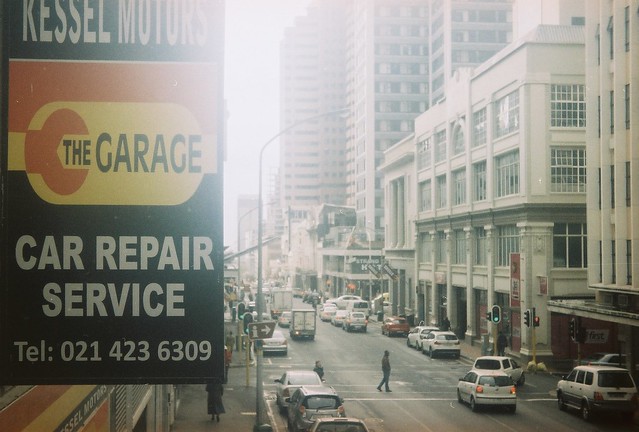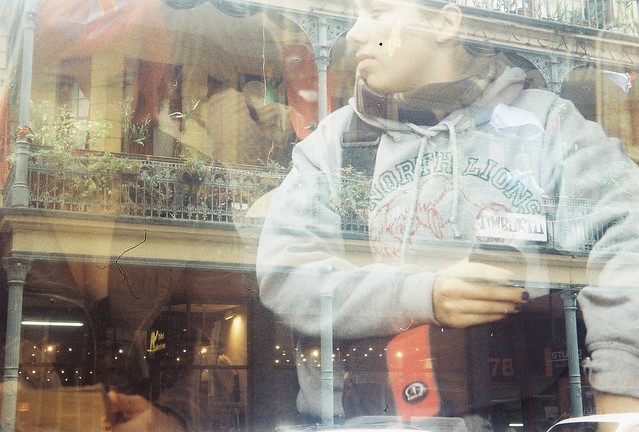I’m seeing a lot of reports these days lamenting lagging computer sales, and theorizing why that might be. I’m of the opinion that a big part of the reason is customer service. These days, it seems that more and more, when you speak to computer companies’ customer service and sales departments, you’re confronted with people who are strictly tied to a specific formula they need to follow. And if you try to deviate from that because you have special circumstances as a customer which require the use of common sense, things will start to go horribly wrong. And heaven forbid you ask to speak to a supervisor. In Dell’s case, they’ll hang up on you before they let you talk to anyone else!
Awhile back, I finally took the plunge and shelled out nearly 1500 bucks for a Toshiba Qosmio. Not because I’m a gamer, but because I’m into video editing and I got fed up with waiting for the computer to process my HD video in Adobe Premiere. And it worked like a dream compared to what I was used to, for a few hundred less than its competitors. Two hard drives for accessing video files from one, and running the software on the other, an eye-popping 1280p screen, and no more waiting for the video to catch up to my latest keystroke. With earlier computers, I would have to reboot every few hours to purge the memory, and then again prior to rendering, to be sure it wouldn’t freeze up in the process.
Then, just as happened with my previous laptop 9 months prior, someone decided to steal it from my home in Windhoek, Namibia. Once again, the whole drill of changing passwords, filling out police reports, and postponing video editing projects. It was especially frustrating because my employer, the US government, had a prohibition against the shipment of anything containing a lithium battery to our overseas location (via a US shipping address).
But then they lifted the prohibition on lithium batteries just as the insurance payment came, and when I was pretty sure the Namibian police were not going to make any more headway in trying to recover the laptop, I contacted Toshiba to order a replacement. And waited the three weeks it takes mail to reach me (we get ours on Mondays. And nothing. So I checked Toshiba’s “track your shipment” feature and discovered that Toshiba had cancelled my order and not bothered to tell anyone.
So after some time on the phone with Filipino-accented tech staff whose job it is to act as a buffer between the customer and the company’s decision makers, we determined that a single digit in the phone number they had on record was the culprit. So we ordered again. This time they decided to charge Virginia sales tax (I don’t live in Virginia, and the State Department has an agreement with the Commonwealth of Virginia that we are exempt, depite our mailing address). A few more calls back and forth, because they consulted the state of Virginia and were strangely told that the Dulles Virginia address is reserved for foreign diplomats stationed abroad. I can imagine the sheepish grin when Toshiba received my email explaining that, no, there is no such thing as a Dulles Virginia mail service for foreign diplomats. Anyway, they agreed about the sales tax, but I would have to phone in my order again. (Thank goodness for Skype!) So at this point, they know where I live and what my deal is, and they’re happy to take my money.
So on June 3, I got my brand new Toshiba, but I had a bad feeling about it. I let it sit on my bed for 3 hours before I finally decided to fire it up. And the screen read, “NO BOOTABLE DEVICE”. Yes, my new laptop, now nearly 2 months after we started the odyssey, was dead on arrival.
So again we call Toshiba. This time we’re told we will receive mailing instructions and a label, we should return via FedEx. Only this is not possible from Africa, by way of Dulles, VA. So I have to pay to ship it back myself. Because Toshiba “can only use FedEx.” Here’s how it works, guys – you log on to the US Postal Service website and they will take it from there. That’s what I do. Only now I have to pay another 60 bucks out of pocket because Toshiba shipped me a non-working $1400 computer.
So I get my shipping information and useless FedEx shipping label (I assume this will still end up costing Toshiba money even though I can never use it, but I could be wrong) and the instructions tell me the return authorization is only good for ten days. Only the mail doesn’t go out until Thursday, and from there it will take at least two more weeks for the computer to get to Toshiba. Fortunately there is an email address (“customerservice@toshiba.com”) where I can get clarification. But do you think they will respond? So far, after two tries, they have not. [Update: after three days, they extended the return authorization to the end of June] Needless to say, the computer went out today regardless – I don’t want to get dinged for hanging on to it too long, either *crosses fingers*
So anyway, back to the phone call. They tell me a few days after they receive it, they will ship me a replacement. “Why can’t you ship me a replacement now?” I ask. “I paid for it 3 weeks ago” (for the second time). This is how it works, I’m told. I guess there’s always a chance I might suddenly decide to keep the replacement without shipping the doorstop I currently have back. So it seems that in six weeks I’ll have the computer I tried to order back in April.
So of course I just went ahead and paid for another one right then. I thought they might throw in overnight shipping, but no dice. Free gaming mouse though. And I thought about the transaction some more.
They must really think I’m stupid, I thought. And I did some googling and comparing and thought some more, and called them back. “I’d like to cancel my order” I told them. In a Filipino accent I was asked, “You no longer need a Toshiba Qosmio?” I smiled, “Actually I still do, but given the frustration I’ve experienced, I decided to order from one of your competitors.” I was thanked, and he wished me a nice day.
At this point, I thought I was out of the woods, and was looking forward to an Alienware M17x to be waiting for me when I return to the States from our 2-year overseas tour next month. But – *sigh* – it was too early to celebrate just yet.
It turns out that Dell will frequently call the phone number you give them just to check that everything is kosher with the order. Which is a good thing – if someone with a Dulles address orders a computer to be shipped to Oregon, that can be a fraud indicator. We associate a relative’s phone number with our credit card, since it’s not possible to give an overseas number when your billing address is in Dulles, VA. So I get an email from Dell telling me my order is cancelled (no reason) and I should call sales. Sales tells me to call the verification department. When I do that, they ask for the order number (which had already been given via the automated phone answerer) and without explanation, transfer me back to sales.
This little game went on for awhile, and finally “Roy” at verification tells me he has called the number I gave them and the person at the other end has no idea who I am, that I should start a completely new order. Except I already knew that my mother-in-law had received no such call. At this point, no amount of “can I please speak to your supervisor” or “can you call my bank to verify” will get Roy to deviate from his script. Finally he hangs up on me.
To cut to the chase, after four more painful calls to Dell via my iPad’s skype (remember, I’m in Africa) I finally get “Lupe” (Guadalupe Monroy) on the phone. He actually listens to my situation and takes into account the special circumstances, and works with me right there on the phone to make things work. Actually uses his brain.
So thanks, Lupe, for making it possible for me to give Dell Computer $2,000 in exchange for their product, and for standing out among a growing number of poor customer service reps. I’ll let you know how things work out when I get back to the States.
Did I mention that computer sales have been dropping?
























































